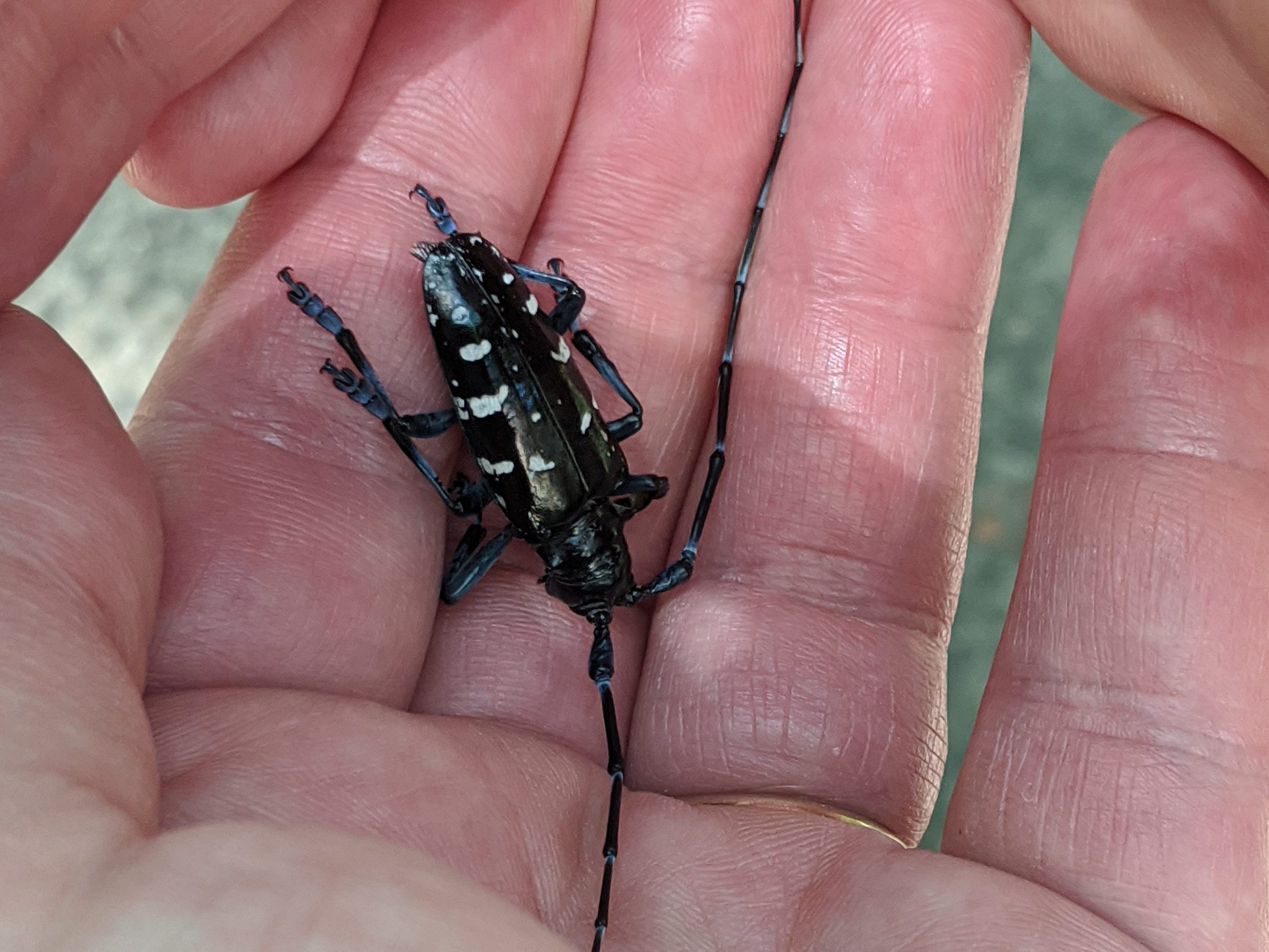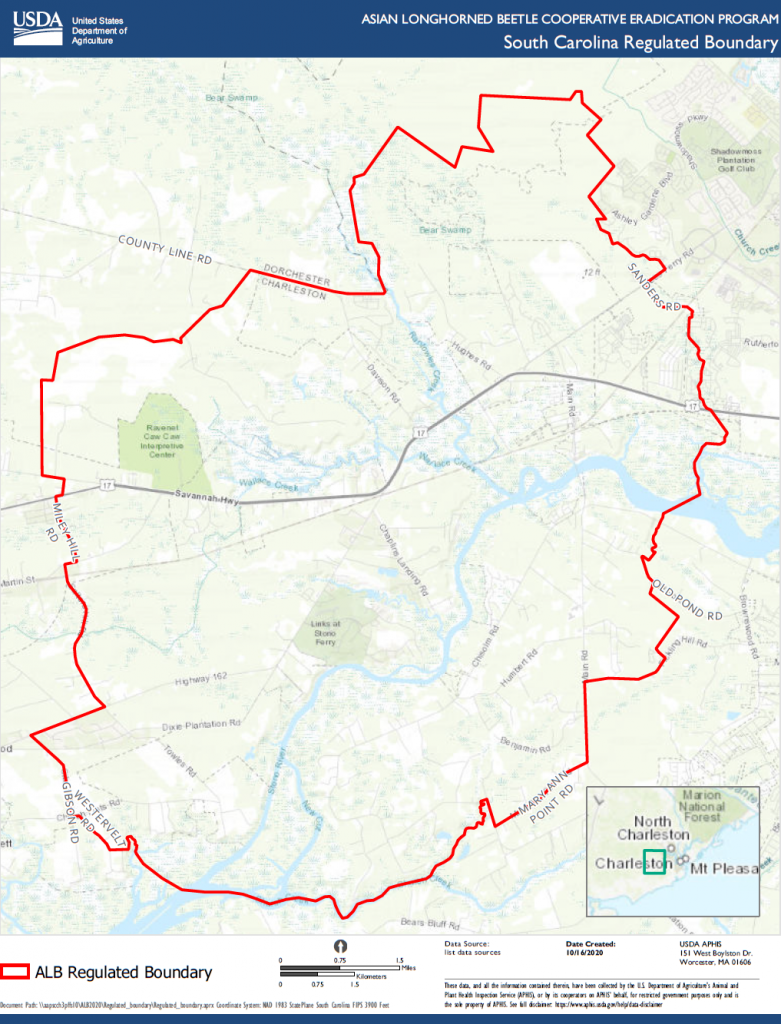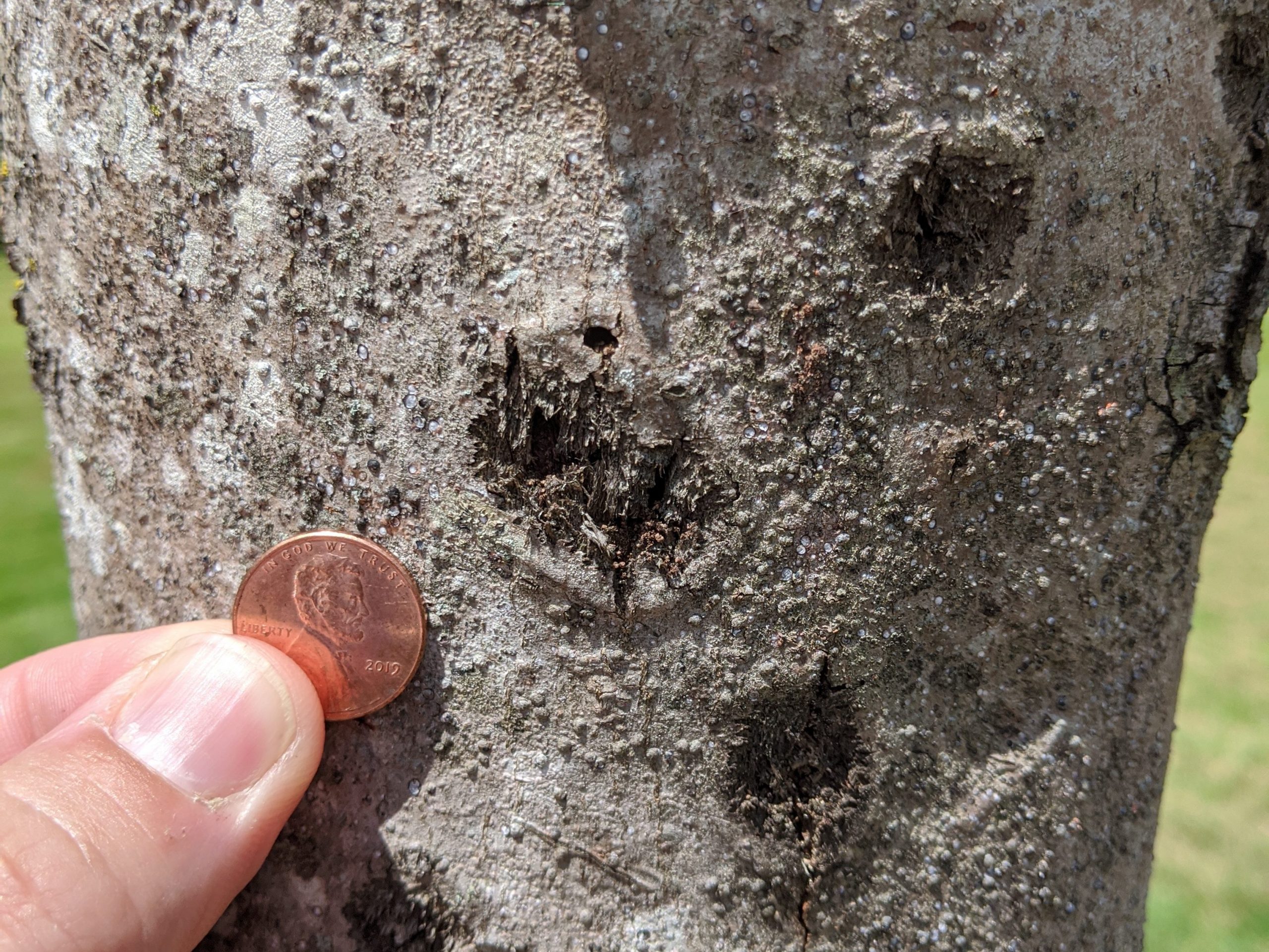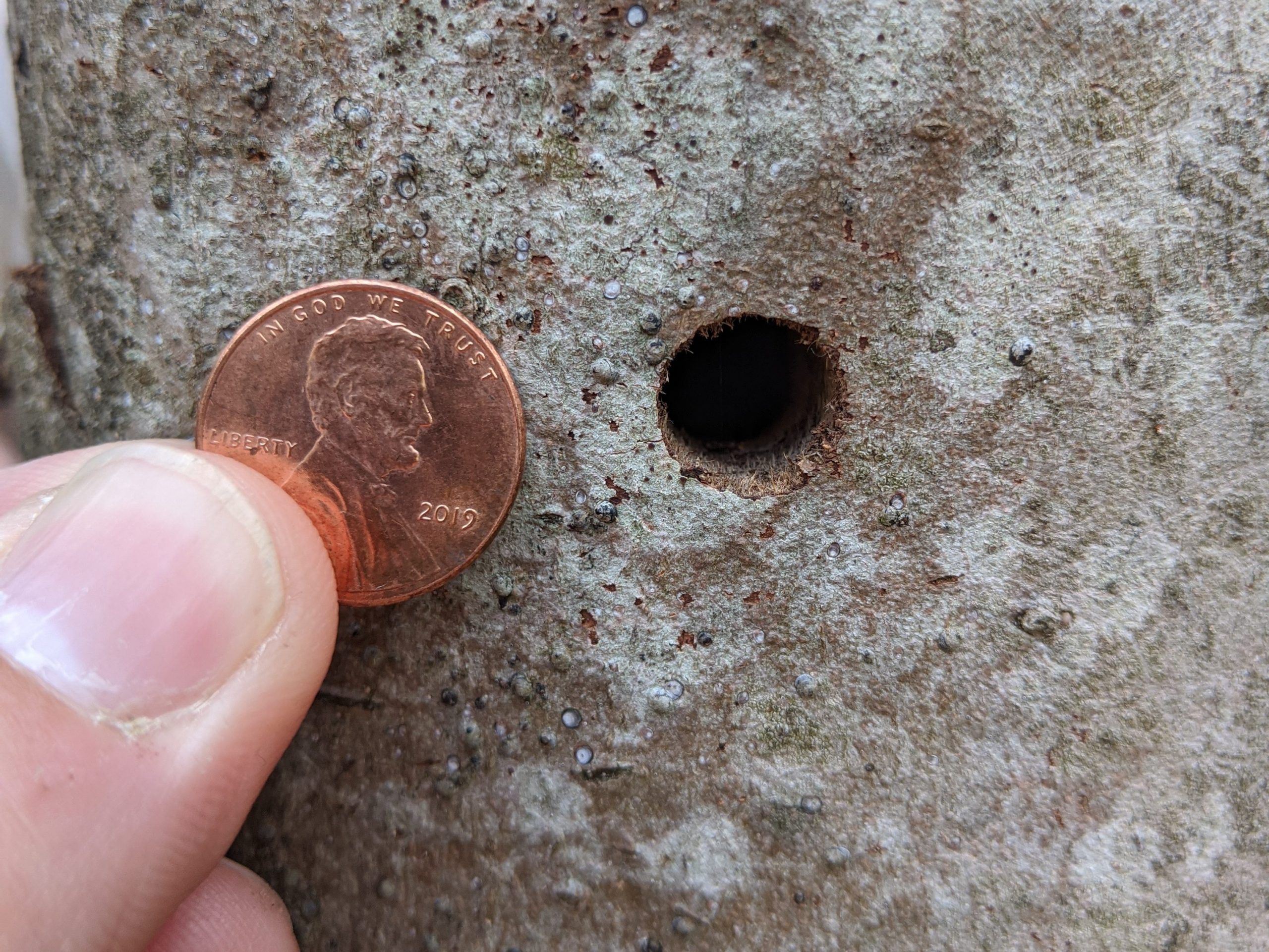
As you may have heard, the Asian Long-horned Beetle (Anoplophora glabripennis) was recently discovered for the first time in South Carolina. The species is a native to Southeast Asia. It first appeared in the United States in 1996 in Brooklyn, New York followed by Illinois in 1998, New Jersey in 2002, Massachusetts in 2008, and Ohio in 2011. In June of 2020 it was discovered in Hollywood, SC. Biologists suspect the infestation has been ongoing for five or more years. So far, more than 2,000 trees have been confirmed to be affected in Ravenel, Hollywood, Meggett, and Johns Island. The infestation appears to be centered on Rantowles and Stono Ferry, encompassing more than a 3-mile radius.

The Asian Long-horned Beetle is an invasive species of insect. Its larvae feed on the wood of native trees, leading to the structural collapse and eventual death of those trees. As a non-native exotic, the beetle has few natural controls and the trees lack sufficient defenses to fight the beetles. This can result in the beetles spreading unchecked through the ecosystem, destroying forests and altering habitats permanently. This potential for uncontrolled growth and ecological damage is what defines the species as an invasive and what makes its discovery so alarming.
The primary larval host plant for Asian Long-horned Beetles here in the Lowcountry is by far Red Maple (Acer rubrum). Red Maple is a native tree that is extremely common in our forested wetlands, bottomlands, and river floodplains. Red Maple is also used extensively in suburban landscaping. The beetle will feed on other tree species as well including Ash, Willow, Elm, Birch, Cottonwood, Sycamore, and possibly Tupelo. They are not known to infect Oaks or Conifers, including Pine. Biologists fear that the beetles will escape into the remote bottomland and floodplain forests surrounding Ravenel. Here they will be much more difficult to control and they may make the jump into infesting Tupelos. The uncontrolled destruction of the Maples and Tupelos of our bottomland forests would be devastating for one of the most critical ecosystems here in the coastal plain of South Carolina.

The adult beetles are metallic blue-black, covered with white spots, and an inch or more in body length. They are quite large and have black and white banded antennae longer than their body. Female beetles leave behind distinct marks on the bark of trees when laying their eggs. Females chew a shallow 3/4 inch scar in the tree’s bark, nicknamed a “cigar burn”, and lay an egg inside. The newly hatched larvae first feed near the surface of the trunk before moving into the heart of the tree. Wood of infected trees can be identified by the finger-width tunnels the larvae leave behind inside the wood. Adults emerge in summer, leaving a deep and perfectly circular half-inch hole in the side of the trunk.


However, all is not lost! The USDA, Clemson University, College of Charleston, and the SC Department of Natural Resources are making a serious and concerted effort to eradicate this dangerously invasive beetle from the South Carolina Lowcountry for good. The College of Charleston’s Stono Preserve was one of the first confirmed sights of Asian Long-horned Beetle in the state and they are working to facilitate the USDA’s establishment of a quarantine headquarters on the property. The USDA and Clemson University are jointly working to assess the scope of the infection and are drafting quarantine protocols and regulations for the area. SCDNR is proactively surveying all Red Maples on their 690-acre Dungannon Heritage Preserve, which is located in the heart of the infestation. The USDA was previously successful in eradicating the Asian Long-horned Beetle from New Jersey, Illinois, and much of New York and Massachusetts. There is still a good chance we can nip this problem in the bud before it gets out of control, especially with your help.
You too can help control the spread of the Asian Long-horned Beetle. Together we can stop it from ravaging our native ecosystems! First and foremost, if you see an adult beetle or the distinct marks they leave behind on host trees, report it to the USDA’s APHIS or Clemson Extension immediately! (Contact info below.) They’re the experts on handling this pest and they’ll know what to do. Other than that, the best thing you can do is not transport firewood or woody yard debris out of or within the infected area. Asian Long-horned Beetle larvae may be living inside of the wood and, if brought out of the quarantine area, can emerge to infect new areas of our state. The adult beetles only emerge during summer, do not live very long, and don’t move very far during that time. By not transporting wood within the infested area, we can drastically reduce the chances of live beetles escaping quarantine and destroying habitat in the surrounding coastal communities, such as Edisto Island.
Further reading on the Asian Long-horned Beetle:
USDA: THE LATEST NEWS ON THE ASIAN LONG-HORNED BEETLE
CLEMSON: MORE INFORMATION ON THE BEETLES IN SOUTH CAROLINA
Where to Report Asian Long-horned Beetle sightings:
Call the USDA at: (866) 702-9938
Contact Clemson: (864) 646-2140 or invasives@clemson.edu
Article by: Tom Austin, Land Protection Specialist for EIOLT
Photos by: Steven Long, Clemson University, Dept. of Plant Industry